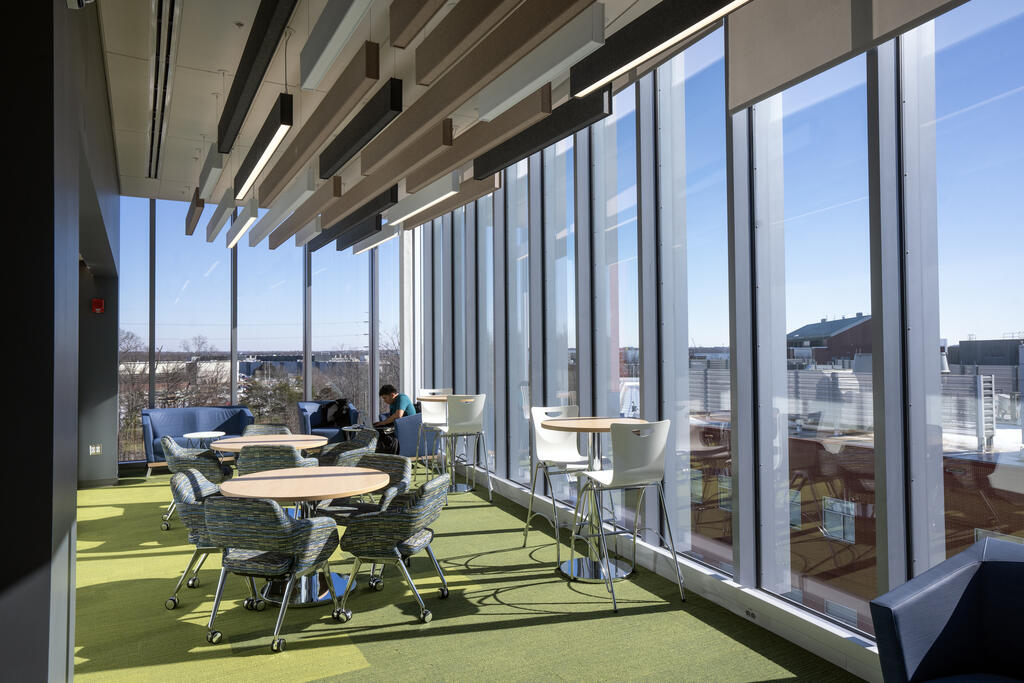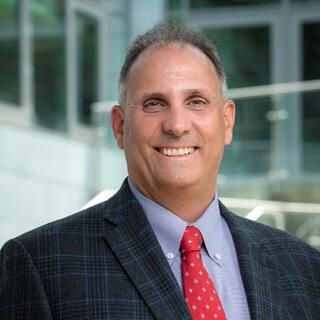Admission CTAs
Dean’s blog: Thinking big (and small) in the Quantum Realm
Leave it to the Marvel Comic Universe to find a way to inspire the next generation of scientists. With the 2015 cinematic introduction of the Ant Man character’s storyline and its recent sequel, we have been transported to the Quantum Realm, a vast subatomic universe waiting to be explored. Seeing as we recently celebrated World Quantum Day last week, I thought it might be interesting to share quantum theory origins, and the multi-disciplinary work being done in four areas of quantum science at Mason.
Today, our teams are working to 1) create algorithms for quantum computing, 2) construct ultra-sensitive quantum sensors, 3) design and discover quantum materials for new computing technologies, and 4) develop programs to prepare the next generation for these technologies. But how did the field originate?
Quantum information and materials science are not just made up for movies. In fact, as our colleagues in physics, mathematics, chemistry, and engineering know, quantum study is very real and robust. And similar to other scientific advancements we study and research, for example as global positioning systems have changed the way we live and navigate our world, this quantum field has the ability to impact sectors including artificial intelligence, data informatics, materials science, and healthcare, while generating new industries of the future.
Over history, we have had brilliant scientists like Max Planck, Niels Bohr, and Albert Einstein (whose work in this field garnered Nobel Prizes in physics, in 1918, 1920, and 1921 respectively) to thank for the foundations of quantum physics.
In time, the field continued to evolve. The first quantum revolution established rules to govern physical reality and included the advent of such technology as lasers, transistors, computers, and MRI imagers. Mason’s Quantum Science and Engineering Center (QSEC) seeks to accelerate the second quantum revolution, taking these rules to establish new electronics, digital information technologies, and industries--an ultimate testing of scientific creativity.
As noted on its website, in this social media video reel, and at a recent Mason Board of Visitors presentation by QSEC Director Dr. Patrick Vora, the QSEC supports the exploration of these high-risk high-reward ideas by fostering a collaborative, interdisciplinary, community-focused environment at Mason. This provides a unique environment for graduate students, undergraduate students, and postdoctoral researchers to make transformative contributions to quantum technology.
In addition to fostering research collaborations, Mason’s QSEC also conducts significant outreach efforts, connecting physicists, engineers, chemists, and mathematicians with educators to promote awareness, understanding, and scientific creativity. For the past few years, to celebrate World Quantum Day, Mason’s QSEC has sponsored workshops, presentations, and activities to help students, faculty, and collaborators better understand what quantum technology is and why we should care, along with explaining career and research opportunities.
Another impactful focus of QSEC involves creating curriculum materials and courses for students from elementary to graduate school while also helping teachers learn about quantum science and engineering so that they are prepared to educate the next generation. We are preparing a diverse workforce for the quantum jobs of the future through education and experiential learning opportunities.
Quantum in your Classroom brings workshops to elementary, middle and high school educators, to introduce quantum science concepts and curriculum to elementary, middle, and high school teachers. Participants start with the basics, learning what quantum physics is, both in theory and conceptually, why it is important for students, and where they can find resources to integrate it into their classrooms. No prior knowledge of quantum is required to participate, tying into Mason’s core value of inclusion and accessibility. Future professional development opportunities will also be available to participants.
The federal research focus and support in quantum science is growing rapidly, well into the billions in 2023, with many corporations following suit. And the important work of our scientists continues. In addition to multiple NSF career award-winning researchers in this field, our scientists also collaborate with partners including the Department of Energy, and the Army and Naval researchers to continue to make important discoveries. For example, the American Physical Society recently noted Dr. Karen Sauer’s team just achieved the world’s most sensitive quantum magnetometer.
With new programs and discoveries around the corner, it is exciting to think small as we think big in the quantum realm. I for one am looking forward to what’s next.

